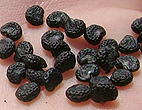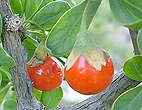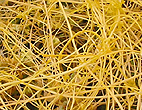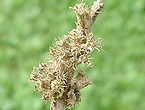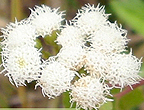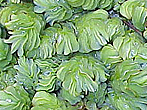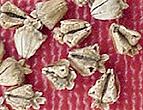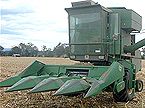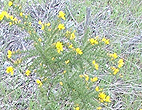module 2
Legislation and weeds
Objectives
At the end of this module, you will be able to:
- understand the reasons for legislation to control weeds
- be able to describe the stages of plant invasion and know the stages where plant eradication or containment might be possible
- know the pitfalls of trying to control widespread weeds through legislation.
Module outline
Weed control legislation
The overwhelming majority of weeds present in Australia came from elsewhere (see Table 1.2 ). However, there is a larger number of potential weed species that are not present in Australia. There are legislative processes aimed at keeping such potential weed species out of Australia. Similarly there is a process that limits limiting the distribution of weeds already present in Australia. The following reading outlines the reason for legislation for minimising weed incursions in Australia.
|
It is particularly important to note that the Australian Quarantine and Inspection Service (AQIS) now prohibits the importation of any plant species not already in Australia until it has been assessed as unlikely to naturalise as a serious weed. This process is very different to previous programs where any species was allowed in unless it was on a list of prohibited species.
Types of legislative programs
Several responses are possible to a weed incursion ranging
from eradication to containment.
The following reading considers the appropriateness of a variety of programs
to different situations and gives several case studies.
|
||||||||
You should also note the discussion of weed strategies. Weed strategies are increasingly used to:
- prioritise weed management decisions, ant to
- provide a framework for implementing weed management.
Plant Health Australia (PHA), a partnership between industry and government, was set up during 2000/01, and has a major role in identifying and coordinating measures to improve Australia's plant health system at a national level. This includes developing effective plant health management systems and coordinating plant health programs. While the focus for PHA also includes insects and microbes, coordination and management of new weed incursions is a major role.
Summary
Weed control legislation attempts to:
- restrict the rate of spread of weeds, and
- provide a framework for coordinated management programs, including determining the responsibilities of landowners and government for weed control.
To be successful, eradication programs must target weed invasions early. Containment programs are used to reduce the rate of spread of a new weed. Legislation is also used to enforce control of widespread weeds; however, often these programs are anti-competitive and inefficient.
Go to Activity 2-1 |
References and further reading
Amor, RL and Twentyman, JD 1974, ‘Objectives of and objections to Australian noxious weed legislation’, Journal of the Australian Institute of Agricultural Sciences, vol. 40, pp. 194-203.
The national weeds strategy:A strategic approach to weed problems of national significance 1997, Commonwealth of Australia, Canberra, Australia.
Auld, BA, Menz, KM and Monaghan, NM 1978, ‘Dynamics of weed spread:Implications for policies for public control’, Protection Ecology, vol. 1, pp. 141-148.
Auld, BA, Menz, KM and Tisdell, CA 1987, Weed Control Economics, Academic Press, London, pp. 11-14 and Chapter 7, pp. 99-120.
Cousens, R and Mortimer, M 1995, Dynamics of Weed Populations, Cambridge University Press, Cambridge, pp. 21-54.
Cronk, QCB & Fuller, JL 1995, ‘Plant Invaders - the threat to natural ecosystems’, Action against invasive plants - 3.2 Legislation, Chapman & Hall, London, pp. 36-37.
Dodd, J 1996, ‘Comparison of the eradication programs for kochia (Kochia scoparia) and skeleton weed (Chondrilla juncea) in Western Australia’, Proceedings of the 11th Australian Weeds Conference, pp. 82-84.
Menz, KM & Auld, BA 1977, ‘Galvanised burr, control, and public policy towards weeds’, Search, vol. 8, pp. 281-287.
Moody, ME and Mack, RN 1988, ‘Controlling the spread of plant invasions: The importance of nascent foci’, Journal of Applied Ecology, vol. 25, pp. 1009-1021.
Parsons, WT and Cuthbertson, EG 1992, Noxious weeds of Australia, Inkata Press, Melbourne, Vic.
Panetta, FD and Scanlan JC 1995, ‘Human involvement in the spread of noxious weeds: What plants should be declared and when should control be enforced?’ Plant Protection Quarterly, vol. 10, pp. 69-74.
Plant Health Australia 2008, viewed 11 September 2008, www.planthealthaustralia.com.au.
Sindel, BM 2000, Australian Weed Management Systems, RG and FJ Richardson, Melbourne.
Zamora, D, Thill, D and Eplee, R 1989, ‘An eradication plan for plant invaders’, Weed Technology, vol. 3, pp. 2-12.
Self assessmentDo you know:
|

